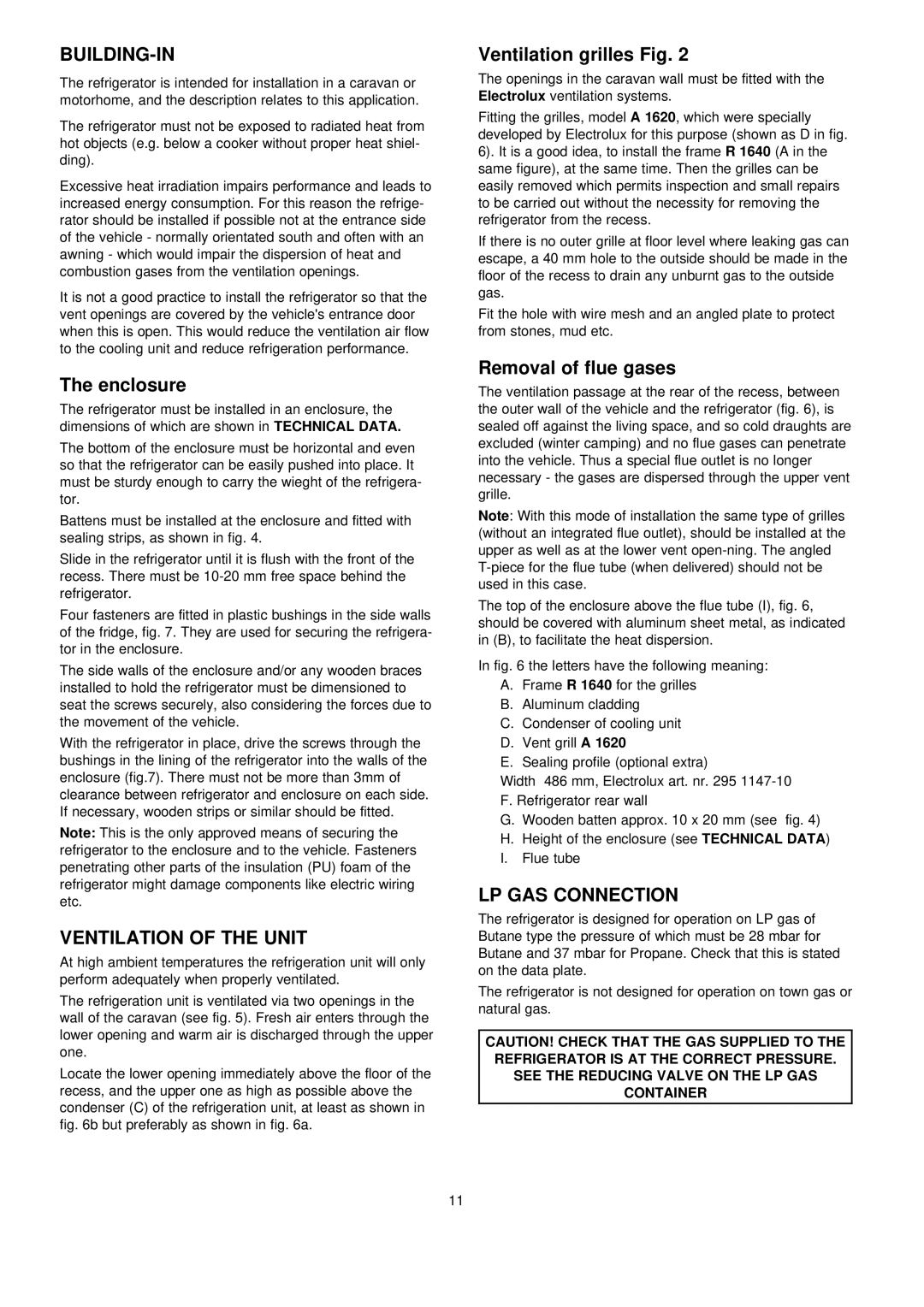RM 4280, RM 4281 specifications
Electrolux, a leading name in home appliances, has long been recognized for its innovation and quality, especially in refrigeration solutions. The Electrolux RM 4280 and RM 4281 are impressive models in their lineup, bringing together advanced technology, design, and user-friendly features tailored for the modern household.The RM 4280 and RM 4281 are both absorption refrigerators, ideal for users seeking silent operation and energy efficiency. These models utilize a unique cooling method that relies on heat rather than mechanical compressors, making them particularly quiet and suitable for a variety of settings, including caravans and boats. With a stylish and compact design, they seamlessly blend into living spaces, providing aesthetic appeal alongside functionality.
One of the key features of the RM 4280 and RM 4281 is their versatility. Both models can operate on three different power sources: 12V, 230V, and gas. This multi-source capability ensures that users can enjoy reliable refrigeration whether at home, on the road, or off-grid, promoting flexibility for any lifestyle. The user-friendly control panel simplifies the transition between power sources, making it easier to switch modes based on current needs.
The cooling performance of the RM 4280 and RM 4281 is remarkable, ensuring that food items stay fresh longer. With an adjustable temperature range, users can customize the cooling level according to their preferences. The interior features ample storage space, complemented by adjustable shelves, allowing for optimal organization of various food items. A dedicated freezer compartment is perfect for storing ice and frozen foods, adding further utility to these models.
Both models are designed with energy efficiency in mind, minimizing environmental impact while keeping energy costs low. The gas operation, in particular, is an attractive feature for those looking to reduce their carbon footprint. Additionally, they boast a clean and sleek finish, making them easy to maintain and clean.
Safety and convenience are also paramount in the design of the RM 4280 and RM 4281. The gas system is equipped with a safety valve, providing peace of mind when using this energy source. Furthermore, these refrigerators come with a flame failure device that automatically shuts off gas flow if the flame is extinguished, enhancing safety during operation.
In summary, the Electrolux RM 4280 and RM 4281 absorption refrigerators are exceptional choices for those needing a reliable and efficient cooling solution. With their innovative technology, flexible power sources, and user-friendly design, these models stand out as top contenders in the competitive refrigeration market. Whether for home, travel, or outdoor activities, these appliances are well-equipped to meet diverse refrigeration needs while ensuring optimal performance and energy efficiency.

